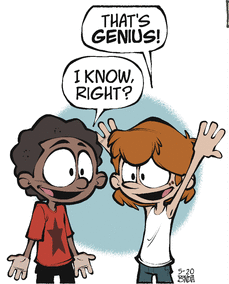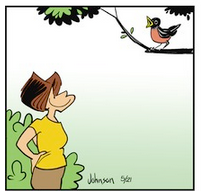Don Carlton – RIP
Skip to commentsLongtime Doonesbury inker Don Carlton has passed away.

December 28, 1936 – May 16, 2023
Don’s early career in the publishing industry included a job as the circulation manager at National Catholic Reporter. However, his longest professional role was his 43-year stint as the “inker” for the comic strip Doonesbury, written by Garry Trudeau.
Don’s long collaboration with Garry B. Trudeau began in 1971 when Jim Andrews of Universal Press Syndicate suggested to the Doonesbury creator that getting an assist from Don would relieve the daily deadline pressure.

That led to a long partnership of Don inking (and soon enough lettering) Doonesbury until 2014 when Don retired.
At about that same time in 1971 artist Don partnered with writer Monte Burch, under the pen name of “Mark Gregory,” and began the Universal Press Syndicate Good Earth Almanac Sunday feature.

Don would pass the art chores on to Richard Lumpkin when he stopped drawing Good Earth Almanac in 1978.
A surprising credit from the obituary:
For a few years, my dad also performed this role [inking] for the comic strip The Far Side by Gary Larson.
Also from the obit:
Don made numerous annual pilgrimages to the town of Ouray, CO—aka “the little Switzerland of America”—and immersed himself in the local culture and community while exploring the surrounding scenery on jeep tours. He authored the popular “Ouray Sketchbook” column in The Ouray Plaindealer newspaper, providing a pen-and-ink drawing along with factual and reflective commentary on the region’s natural assets and points of historic interest.



The above samples of A Wistful Visitor’s Ouray Sketchbook are from The Ouray Plaindealer of 2020.
An interview with Don from 1982.
A video interview with Don from 2021.


Comments 11
Comments are closed.